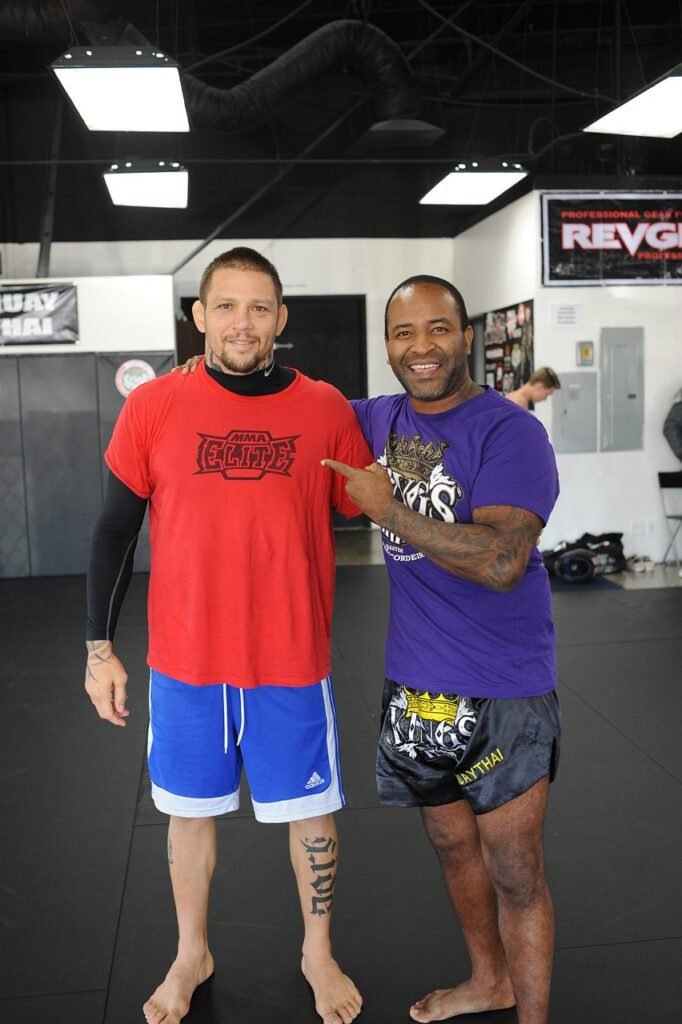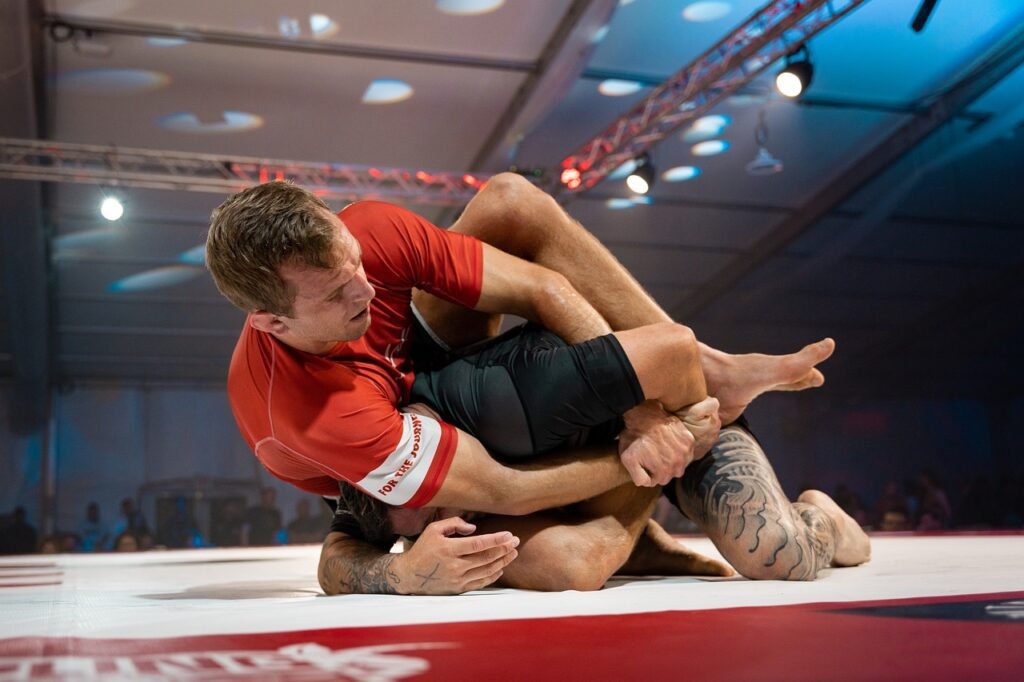Are you tired of constantly being overpowered by your opponents in a physical confrontation? Look no further! In this article, you will discover a treasure trove of advanced techniques to control and manipulate your opponent’s posture. By mastering these innovative methods, you will gain a significant advantage in any fight, effortlessly tipping the scales in your favor. Say goodbye to being at the mercy of your adversaries and embrace the power to dictate the course of a confrontation. Get ready to become an unstoppable force with these game-changing strategies.

Setting Up Proper Posture
Establishing a Strong Base
Setting up proper posture is crucial when it comes to controlling and manipulating your opponent’s movements. It all starts with establishing a strong base. By ensuring that your feet are positioned shoulder-width apart and slightly bent at the knees, you create a solid foundation to build upon.
To further reinforce your base, focus on distributing your weight evenly between both feet. This will help you maintain stability and prevent your opponent from easily pushing you off balance. Remember, a strong base is the key to executing effective control techniques.
Maintaining Proper Alignment
Maintaining proper alignment is another essential component of setting up proper posture. It involves keeping your head, spine, and hips aligned in a straight line. This alignment not only enhances your balance but also allows you to leverage your body mechanics efficiently.
To achieve proper alignment, imagine a string running from the top of your head down through your spine and extending to your hips. Visualize this string pulling you upward, elongating your spine, and keeping your posture upright. By constantly reminding yourself to maintain this alignment, you will be maximizing your control and manipulation over your opponent’s movements.
Utilizing Grip and Control
Controlling the Opponent’s Head
One effective way to control and manipulate your opponent’s posture is by gaining control of their head. This can be achieved through various grip techniques. You can use your hands to grip the back of their head, or alternatively, you can employ an overhook or underhook to control their head and neck.
By establishing control over your opponent’s head, you limit their mobility and disrupt their balance. This allows you to dictate the pace of the match and execute your techniques more effectively. Remember to maintain a firm but controlled grip, as excessive force may result in penalties or injuries.
Dominating the Collar Tie
Another effective grip technique for controlling and manipulating your opponent’s posture is dominating the collar tie. This involves securing a grip on your opponent’s collar, either with one hand or both hands. By controlling their collar, you can manipulate their balance and limit their ability to execute certain techniques.
When establishing the collar tie, make sure to maintain a relaxed grip to conserve energy. Your grip should be strong enough to control your opponent’s movements, but not so tight that it becomes fatiguing. By mastering the collar tie, you gain a significant advantage in controlling and manipulating your opponent’s posture.
Utilizing Arm Drags
Arm drags are an excellent technique to not only control your opponent’s posture but also create opportunities for offensive maneuvers. This technique involves using your arms to quickly and forcefully redirect your opponent’s arm across their body. By doing so, you disrupt their balance and expose their back, allowing you to attack with various submissions or takedowns.
To effectively execute arm drags, timing and precision are key. Anticipate your opponent’s movements and exploit brief moments of vulnerability to initiate the arm drag. By mastering this technique, you can further enhance your control and manipulation over your opponent’s posture.
Leveraging Weight Distribution
Using Off-Balancing Techniques
Off-balancing techniques can be incredibly effective in controlling and manipulating your opponent’s posture. By disrupting their balance, you create opportunities to execute various attacks or transitions. One common off-balancing technique is the use of foot sweeps.
Foot sweeps involve sweeping your opponent’s supporting leg, causing them to lose balance and control. By timing the sweep correctly and applying the proper amount of force, you can exploit your opponent’s momentary instability and gain an advantageous position.
Exploiting Weight Transfer
Understanding how weight transfer affects your opponent’s posture is crucial in gaining control and manipulating their movements. When your opponent transfers their weight to a specific leg or side of their body, it presents an opportunity for you to exploit their imbalance.
Exploiting weight transfer can be achieved through techniques such as hip bumps or using sweeps that force your opponent to shift their weight. By capitalizing on these moments, you can control your opponent’s posture and dictate the flow of the match.
Attacking the Opponent’s Posture
Breaking the Opponent’s Posture
Breaking your opponent’s posture is a fundamental step towards gaining control and manipulating their movements. By bending their spine or forcing their head down, you disrupt their balance and limit their offensive capabilities.
One effective technique for breaking the opponent’s posture is the double collar tie. This involves gripping both sides of your opponent’s collar and pulling downwards and towards you, which forces their head down and their spine to bend. This technique not only limits your opponent’s ability to generate power but also opens up opportunities for submissions and takedowns.
Implementing Snap Downs
Snap downs are another powerful method to attack your opponent’s posture. This technique involves using a sudden and forceful downward motion to pull your opponent’s head towards the mat. By doing so, you prevent them from maintaining an upright posture and create openings for various attacks.
When executing snap downs, it is crucial to generate explosive power through your hips and core. The element of surprise is also essential, catching your opponent off-guard and capitalizing on their momentary vulnerability. Snap downs not only control your opponent’s posture but also set you up for successful follow-up techniques.
Engaging in Shoulder Pressure
Shoulder pressure is an effective way to control your opponent’s posture and limit their mobility. It involves placing your shoulder or chest against your opponent’s face or chest, exerting continuous pressure to keep them pinned and restrict their movement.
By applying shoulder pressure, you force your opponent to carry your weight while simultaneously preventing them from attaining a more advantageous position. This tactic can be particularly useful in grappling scenarios, providing you with the upper hand in terms of control and manipulation.

Manipulating the Opponent’s Center of Gravity
Using Leg and Hip Control
Leg and hip control are essential components of manipulating your opponent’s center of gravity. By gaining control over their legs and hips, you can disrupt their balance and limit their mobility.
One effective technique for leg and hip control is utilizing leg wraps or hooks. This involves using your legs to entangle or trap your opponent’s legs, preventing them from freely moving or escaping certain positions. By controlling their legs, you can further manipulate their center of gravity and dictate their movements.
Employing Foot Sweeps
Foot sweeps are not only useful for off-balancing your opponent but also for manipulating their center of gravity. By sweeping their foot out from under them, you force them to redistribute their weight and compromise their balance.
When executing foot sweeps, timing and precision are crucial. Anticipate your opponent’s movements and exploit openings to initiate the sweep. By successfully manipulating their center of gravity, you gain a significant advantage in controlling their posture.
Implementing Hip Bumps
Hip bumps are a powerful technique for manipulating your opponent’s center of gravity while simultaneously creating opportunities for offensive maneuvers. This technique involves using explosive hip movements to lift your opponent off balance or off their feet.
By effectively executing hip bumps, you disrupt your opponent’s posture, create space, and gain advantageous positioning. Timing, coordination, and core strength are essential elements in successfully implementing hip bumps to control and manipulate your opponent’s movements.
Capitalizing on Body Mechanics
Understanding the Body’s Limitations
Understanding your opponent’s body mechanics and limitations is crucial in gaining control and manipulating their posture effectively. By identifying their weaknesses and exploiting them, you can maximize your control and increase your chances of success.
For example, if your opponent has limited flexibility in their hips or spine, focusing on techniques that target those areas can yield significant results. Similarly, if they have weaknesses in their balance or core strength, strategizing to exploit those weaknesses can tip the scales in your favor.
Identifying Weak Points
Every opponent has weak points that can be targeted to gain control and manipulate their posture. These weak points may vary from person to person, but common areas include the neck, joints, and vulnerable structural points such as the lower back.
By identifying and capitalizing on these weak points, you can effectively control your opponent and capitalize on opportunities to execute attacks or transitions. Take the time to understand your opponent’s body and weaknesses to optimize your control and manipulation strategies.

Implementing Effective Counters
Defending Against Posture Breaks
Defending against posture breaks is an essential skill in maintaining control and preventing your opponent from gaining an advantage. When your opponent attempts to break your posture, it is crucial to react swiftly and effectively to maintain a strong position.
One effective counter to posture breaks is utilizing your core strength to resist their attacks. By engaging your core muscles and maintaining a solid base, you can withstand their efforts and possibly even counter their attacks. Additionally, understanding proper leverage and weight distribution can help you regain control and neutralize their attempts at breaking your posture.
Neutralizing Control Techniques
Neutralizing control techniques employed by your opponent requires a combination of defensive and counterattacking strategies. By focusing on maintaining proper alignment and posture, you can effectively neutralize their attempts at controlling your movements.
When your opponent attempts to establish grips, maintaining an active and proactive defense is crucial. By actively pummeling and breaking their grips, you deny them the control they seek. Additionally, utilizing framing techniques and good hip movement can help you neutralize their control and create opportunities for escape or counterattacks.
Developing Fluid Transitions
Linking Multiple Techniques
Developing fluid transitions between techniques is essential for maintaining control and manipulating your opponent’s posture. By linking multiple techniques together, you keep the pressure on your opponent and create a seamless flow that can be challenging for them to counter.
To develop fluid transitions, it is important to have a deep understanding of various techniques and how they can complement each other. By practicing these transitions repetitively, you develop muscle memory and enhance your ability to seamlessly flow between positions. This ultimately allows you to maintain control and effectively manipulate your opponent’s movements.
Seamlessly Flowing Between Positions
Seamlessly flowing between positions is a skill that requires practice and adaptability. By smoothly transitioning from one position to another, you can maintain control over your opponent and continue to manipulate their posture.
To improve your ability to flow between positions, focus on maintaining constant pressure and controlling your opponent’s movements. As you transition, anticipate your opponent’s reactions and adjust your techniques accordingly. By developing this seamless flow, you can maintain control and successfully carry out your desired attacks or submissions.
Maximizing Positional Control
Establishing Dominant Positions
Establishing dominant positions is a key component of maximizing control over your opponent’s posture. By securing positions such as side control, mount, or back control, you gain superior control over your opponent and limit their options for escape or retaliation.
When establishing dominant positions, it is crucial to focus on maintaining proper alignment and pressure. By applying consistent pressure and controlling your opponent’s movements, you enforce your dominance and make it difficult for them to regain control. The more dominant positions you establish, the more control and manipulation you can exert over your opponent’s posture.
Maintaining Pressure and Control
Maintaining pressure and control is crucial in maximizing your positional dominance and manipulating your opponent’s posture. Once you have established a dominant position, it is essential to keep the pressure on and hold your opponent tightly to limit their mobility.
Maintaining control involves utilizing techniques such as cross-facing, applying shoulder pressure, or establishing underhooks. By continuously adjusting your position and applying pressure strategically, you can keep your opponent off balance, prevent them from establishing a strong base, and maintain control over their posture.
Enhancing Timing and Speed
Reacting Swiftly to Opportunities
Reacting swiftly to opportunities is a crucial skill in controlling and manipulating your opponent’s posture. By recognizing and capitalizing on openings created by your opponent’s movements or mistakes, you can quickly take control and execute offensive maneuvers.
Developing the ability to react swiftly requires a combination of anticipation, timing, and awareness. By staying focused and constantly analyzing the situation, you can position yourself to respond immediately when an opportunity arises. Be prepared to seize the moment and exploit your opponent’s vulnerability to gain control and manipulate their posture effectively.
Timing Attacks and Defenses
Understanding and mastering timing is essential in controlling and manipulating your opponent’s posture. By correctly timing your attacks and defenses, you can maximize your chances of success and minimize the risk of counterattacks.
When launching attacks, consider the timing of your opponent’s movements and reactions. Analyze their patterns and tendencies to anticipate when they may be vulnerable or off-balance. Conversely, when defending against your opponent’s attacks, focus on timing your counters or escapes to disrupt their control and regain the upper hand.
Remember, timing is a skill that comes with experience and practice. Continuously refine your timing abilities through consistent training, analysis, and adjustments to effectively control and manipulate your opponent’s posture.

